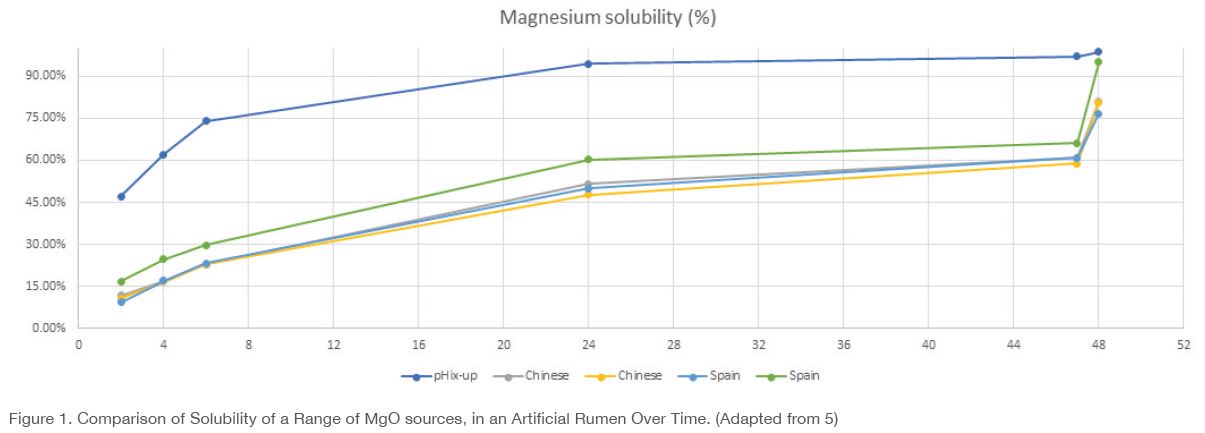The Importance of Magnesium at Grazing
- 9 Apr 2021
- 0 Comments

With spring turnout fast approaching, it is a crucial time to be thinking about dietary magnesium and making sure that the milkers’ ration is targeted to meet the cow’s production needs.
Magnesium is integral in key enzyme processes
Magnesium (Mg) is well understood to be an essential mineral to the dairy cow and is integral in key enzyme processes, regulating nerve impulses and in the immune system. To be utilised by the cow, Mg supplied needs to be soluble in the rumen liquor and absorbed across the rumen wall.
Early Spring - greatest period of challenge for cows
Seasonally, the greatest period of challenge for cows to utilise adequate Mg is during the early spring and autumn, when there are peaks of rapid grass growth, with high rainfall. Rich lush pasture characteristically does not support ruminal Mg absorption, due to the low ratio of Mg to potassium (K) present. High K ions levels in the rumen can directly inhibit Mg uptake across the rumen wall. Uptake can be further reduced by spring grasses’ high content of rapidly degradable protein, which will consequently elevate rumen ammonia levels. High levels of rumen ammonia can convert Mg into an insoluble form, unavailable for absorption.
Grass staggers
The classic clinical manifest of a large deficit between Mg absorbed and requirements is grass tetany, commonly known as ‘ grass staggers’. This comes from the impairment of the nervous system, which misfires, and acute cases may result in a sudden unexplained death. Sub-acute cases can result in abnormal gait, lower feed intake, weight loss and reduced milk production. Early lactation cows are at most risk, due to higher output of Mg through the milk. A 40L cow can lose as much as 4-8g Mg a day through milk losses.
The most efficient approach to prevent grass tetany is by supplementing extra dietary Mg at least 2 weeks before, and throughout the risk period, until pastures mature. Supplementary soluble Mg is often provided as magnesium oxide (MgO) also known as ‘Cal mag’, although there are various options to fit in best, with different farming systems. THE











